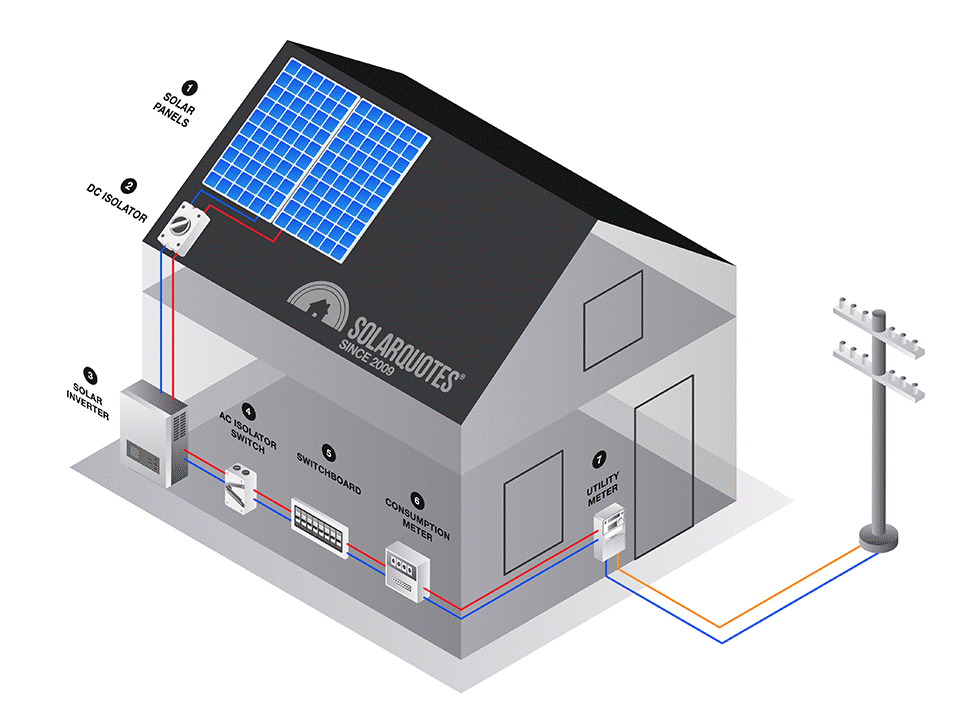Anatomy of a Solar PV Electricity System.
Here’s a picture showing how a typical solar PV electricity system works:

Your new solar PV power station will be made up of the following components:
1. Solar Photovoltaic (PV) Panels
These are usually the most expensive part of a solar system and they simply absorb sunlight and spit out electricity. However, that electricity is in a form that’s not very useful to us – Direct Current (DC) electricity. To make it compatible with our appliances it travels via chunky, high current cables to what’s known as an inverter. But first it goes through another component.
2. Rooftop DC Isolator
This is a manually operated switch that enables quick shutdown of electricity being transmitted from the panels to the inverter in the case of an emergency.
3. DC to AC Inverter
This is a box of tricks that takes the ‘raw’ DC electricity from the PV panels and changes it into 230V AC that’s used by our appliances and gadgets. Inverters are the second most expensive bit of kit in a system.
4. AC Isolator Switch
Another safety mechanism that enables quick shutdown of the system – disconnecting it from your home.
A word of caution: There is a specific shutdown procedure that should be followed when disconnecting your solar system – carefully follow the instructions. If you have any doubts at all, follow the shutdown procedure at night or have a qualified installer do it. All the voltages in a solar PV system are potentially lethal!
5. The main fusebox (switchboard)
Provided your existing fusebox – or switchboard – isn’t particularly old or small, you shouldn’t need a new one. Your solar system will be wired into your switchboard so it can provide electricity to your home and any surplus can be sent into the grid.
Be wary if someone tries to quote you for a system without inspecting your switchboard. At a bare minimum, they should request a photo.
6. Consumption meter
This is a very handy optional device that lets you monitor both your household’s energy consumption and the output of your solar system. It shows how much solar energy is saving you on electricity bills in real time and lets you spot opportunities to shift appliance use to times when your system is generating surplus solar electricity.
7. Your (likely new) electricity meter
In many cases, you will need a new electricity meter able to measure electricity imports and exports to/from the mains grid. Your electricity retailer will install this for you. Be aware: The retailer could potentially use this as an excuse to put you on a ‘time of use’ electricity tariff. This means that you may pay different amounts for electricity depending on when you use it. The good news is if you use your appliances intelligently this can actually reduce your bills further, but you need to know what you are signing up for. Be sure to have a good chat with your retailer about this.